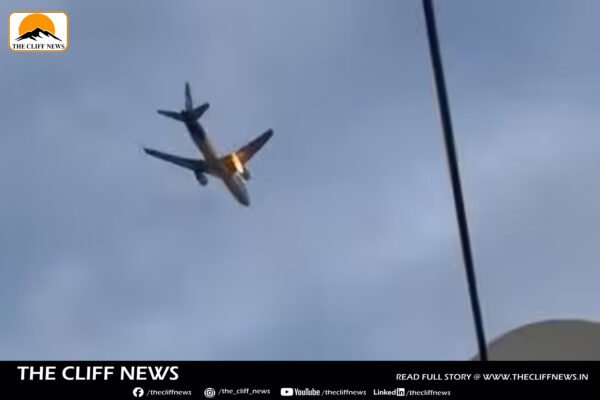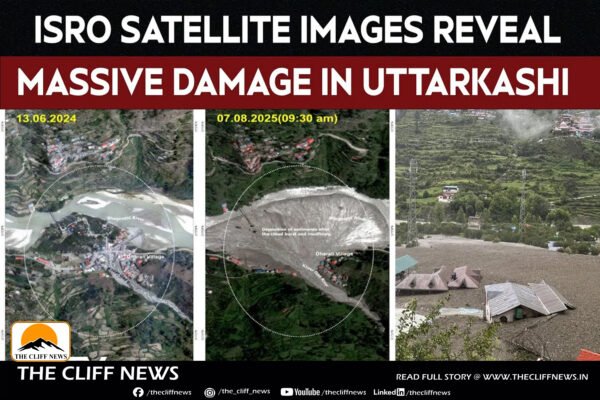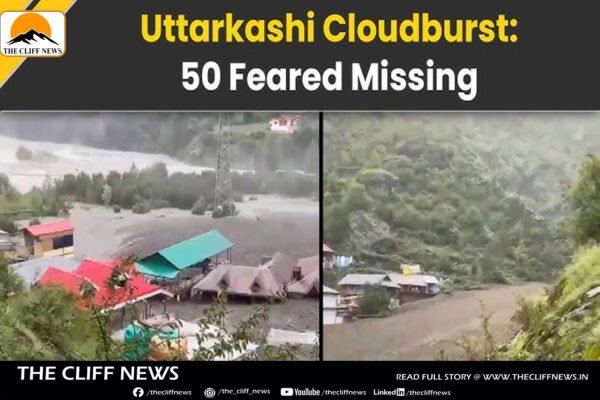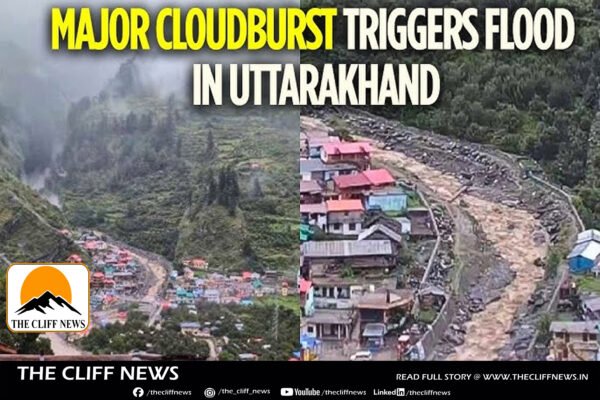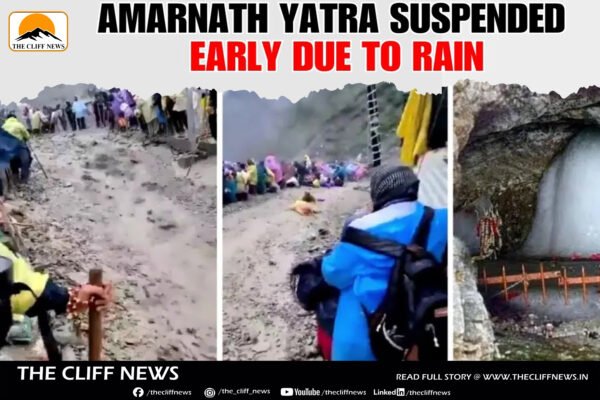A devastating mudslide that destroyed large parts of Dharali village in Uttarakhand’s Uttarkashi district, killing at least five people and leaving scores missing — including 11 soldiers — may have been caused by a glacial lake burst and not a cloudburst, as initially suspected. Several experts have raised doubts over the cloudburst theory, citing low rainfall data and pointing instead to a possible glacial outburst flood (GLOF). Glacial Lakes in the Region May Be to Blame Dr. DD Chauniyal, a geography professor at Doon University and expert in Himalayan terrain, suggested that glacial ponds north of Dharali, in the snow-covered high-altitude region where the Kheer Ganga River originates, may have overflowed due to melting snow and earlier rains. This could have caused one pond to burst, triggering a chain reaction that sent water and debris cascading downstream. “The gradient is extremely steep. The water must have rushed down with enormous force and hit Dharali,” he said. Changed River Course Added to the Damage Dr. Chauniyal noted that Kheer Ganga merges with the Bhagirathi River near Dharali and that the river’s course has changed over the years. He pointed out that settlements had sprung up along the old river course, where the debris eventually flowed. “Earlier, this area was agricultural land. Now it’s packed with hotels, homes, and markets,” he said, adding that the old Dharali village on the safer side of the river remained largely unaffected. Unplanned Development: A Recurring Issue The professor emphasized how unplanned development in hazard-prone zones worsens the impact of such disasters. “Earlier, people built homes in safer zones. But recent, unregulated construction ignored the ecological risks,” he added. He also noted that the deluge lasted only a few seconds, similar to the 2013 Kedarnath disaster, another tragic instance linked to glacial lake bursts. Cloudburst Theory Under Question In the hours after the disaster, many assumed a cloudburst had caused the mudslide. However, weather data contradicts that theory. According to officials, Harsil received only 6.5 mm of rain that day. The 24-hour cumulative rainfall in Harsil and Bhatwari was just 9 mm and 11 mm, well below the 100 mm/hour threshold typically associated with cloudburst-triggered flash floods. Massive Rescue Efforts Amid Road Blockades Rescue operations are ongoing, with personnel from the Army, NDRF, and paramilitary forces on the ground. So far, five bodies have been recovered, and about 150 people have been rescued, though many more remain missing, including tourists and first responders. NDRF DIG Mohsen Shahedi confirmed that access to Dharali remains difficult due to landslides blocking the Rishikesh–Uttarkashi highway. Calls for Sustainable Development and Long-Term Planning The disaster has reignited the debate over development versus environmental sustainability in the fragile Himalayan belt. Priyanka Gandhi Vadra, Congress MP, stressed the need for comprehensive, long-term disaster planning, pointing to repeated tragedies across Uttarakhand, Himachal Pradesh, and Wayanad. Akhilesh Yadav, Samajwadi Party president, called for a revival of Ram Manohar Lohia’s vision to protect the Himalayas and their rivers. Congress MP Ranjeet Ranjan termed the incident a “man-made calamity”, blaming large-scale construction projects like road widening for Char Dham Yatra in eco-sensitive zones like Dharali. “This is a recipe for disaster. We raised these concerns in Parliament,” Ranjan said, calling for stricter environmental safeguards. This tragedy underscores the critical need for planning development responsibly in eco-sensitive areas and considering the long-term environmental costs of unregulated construction.
